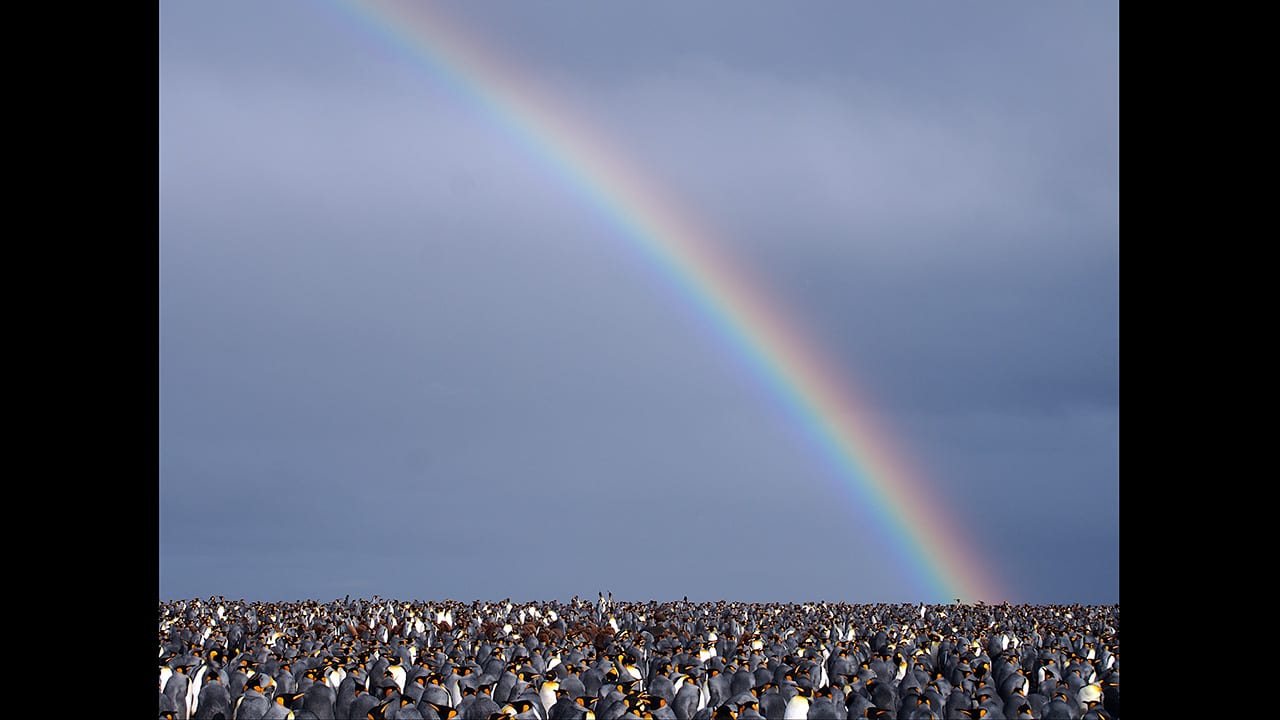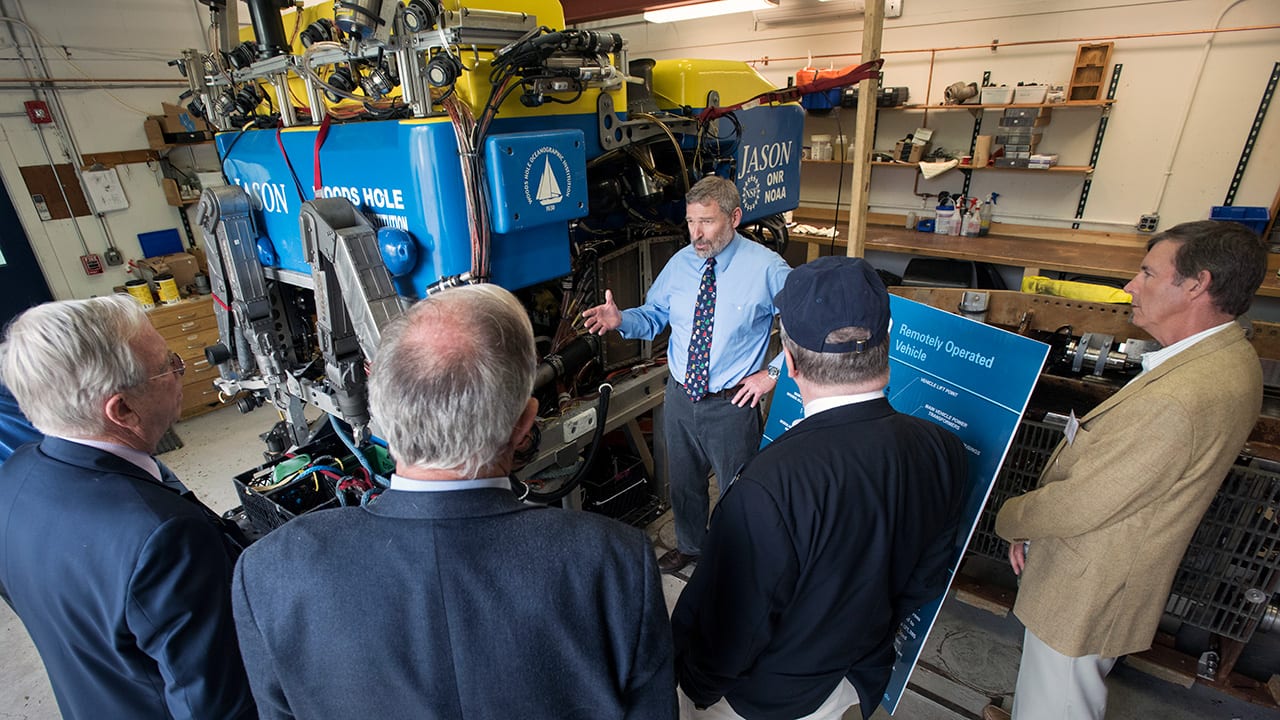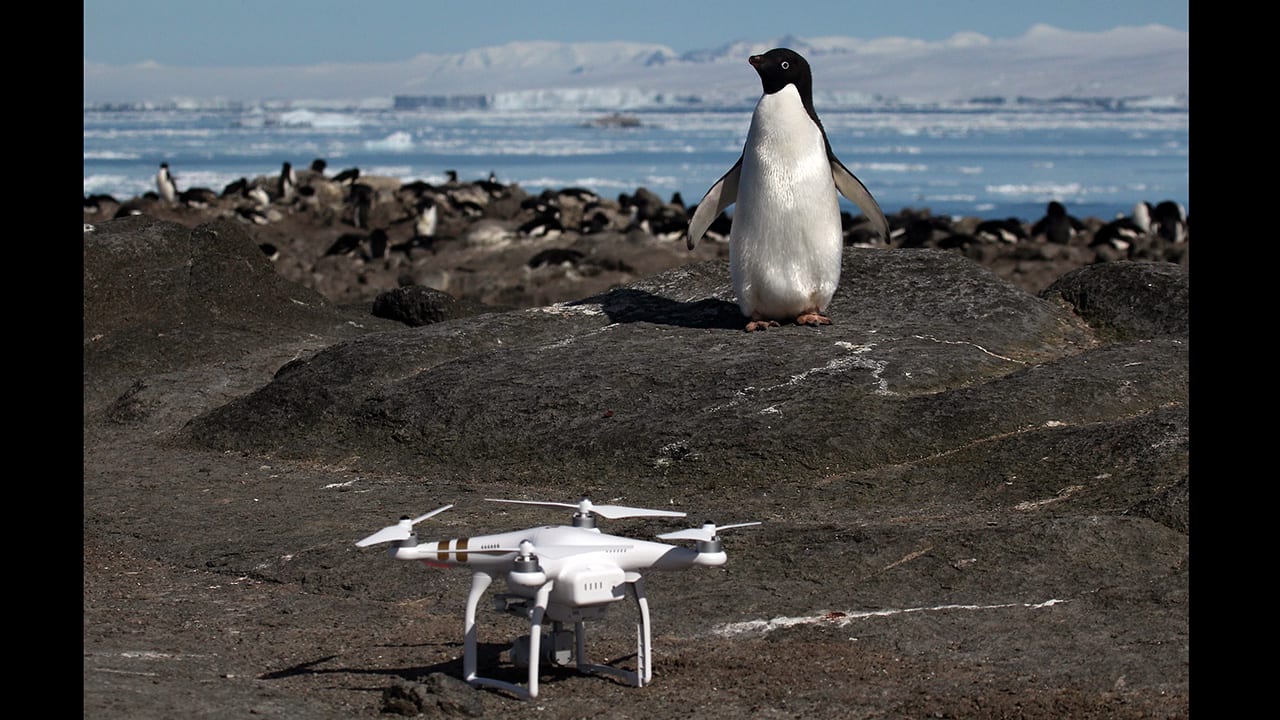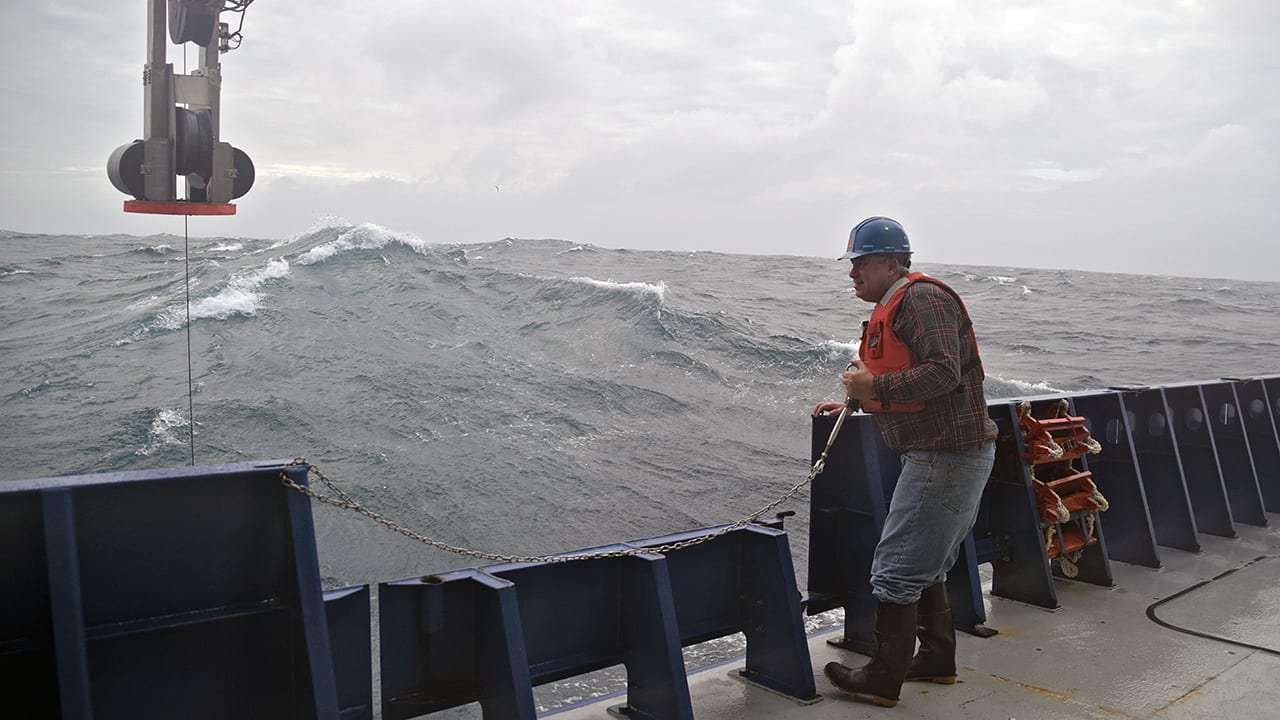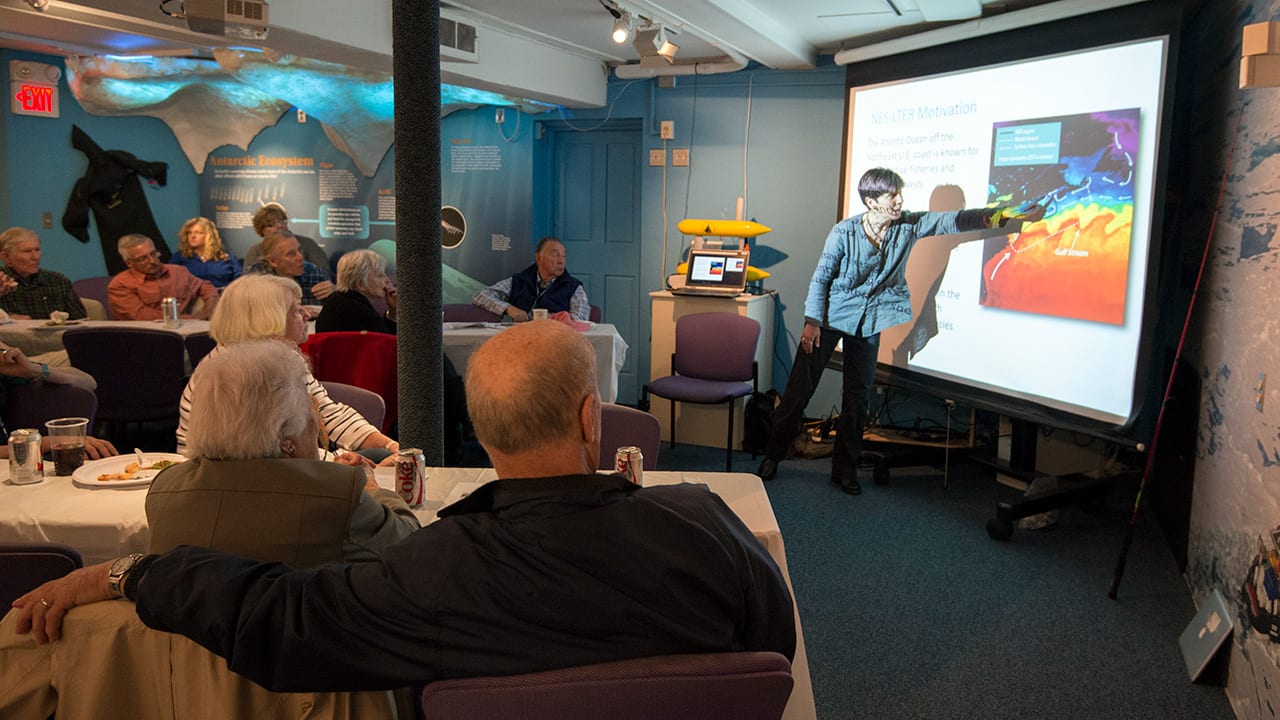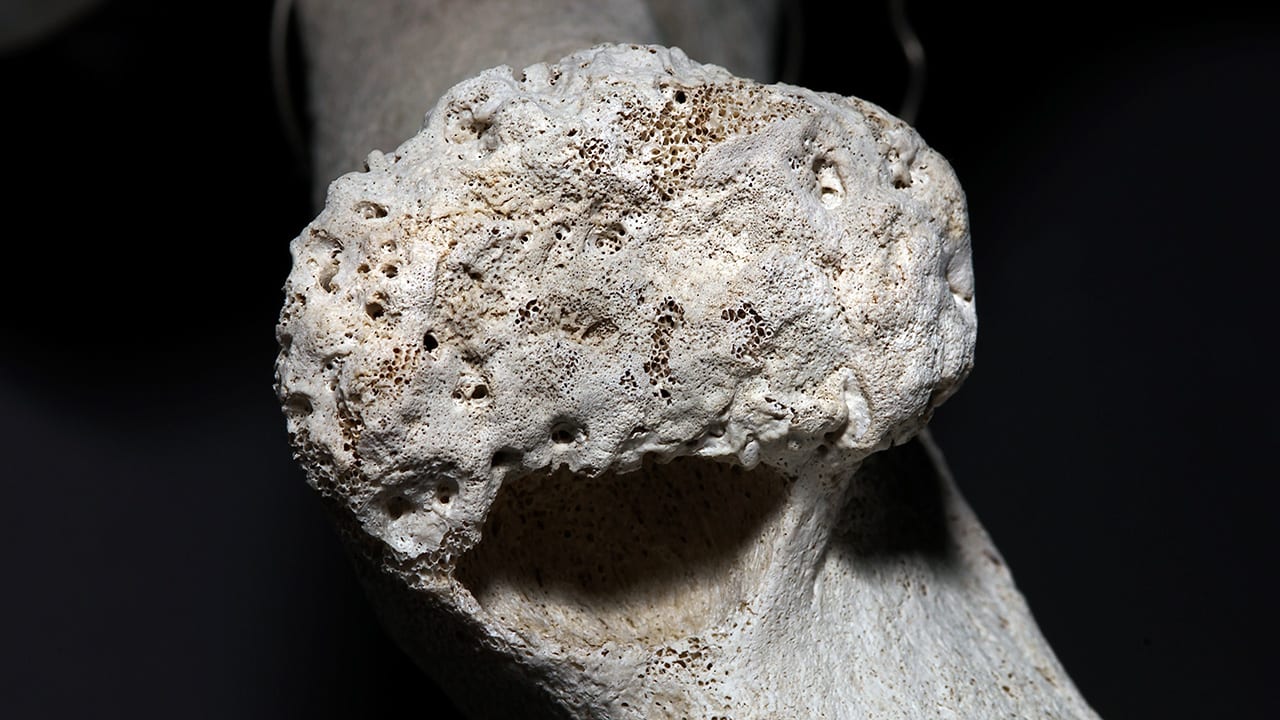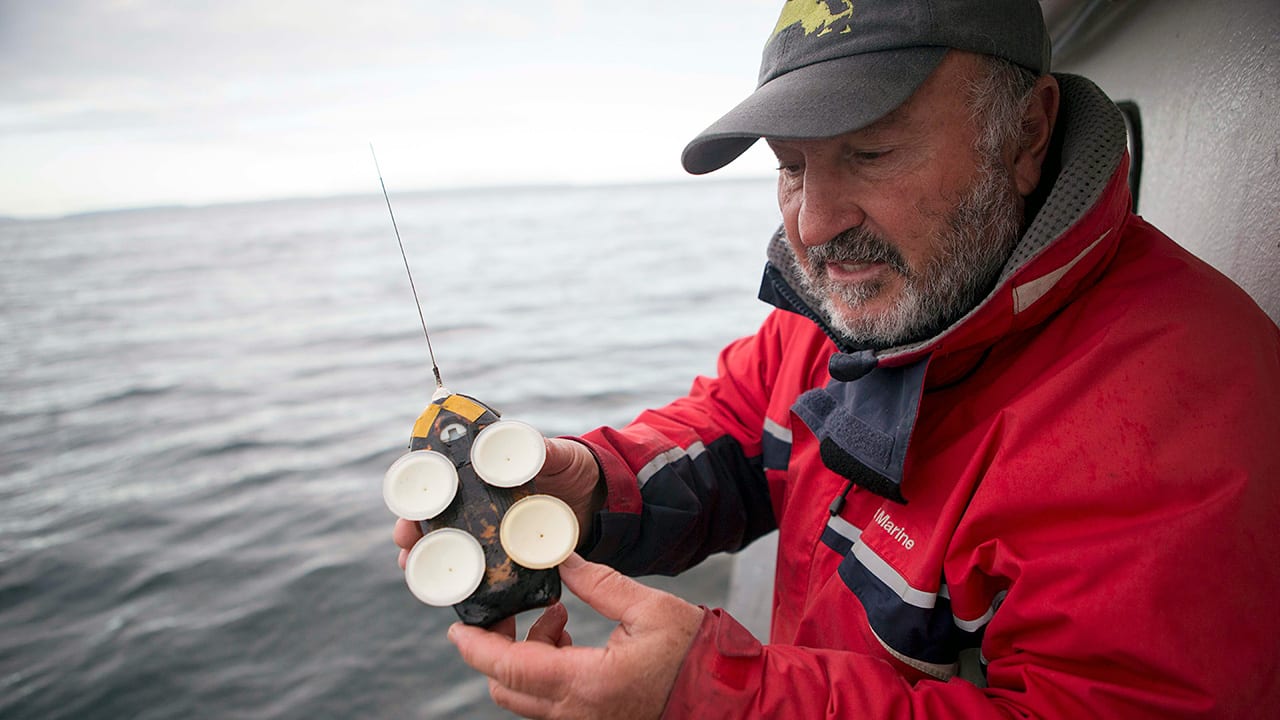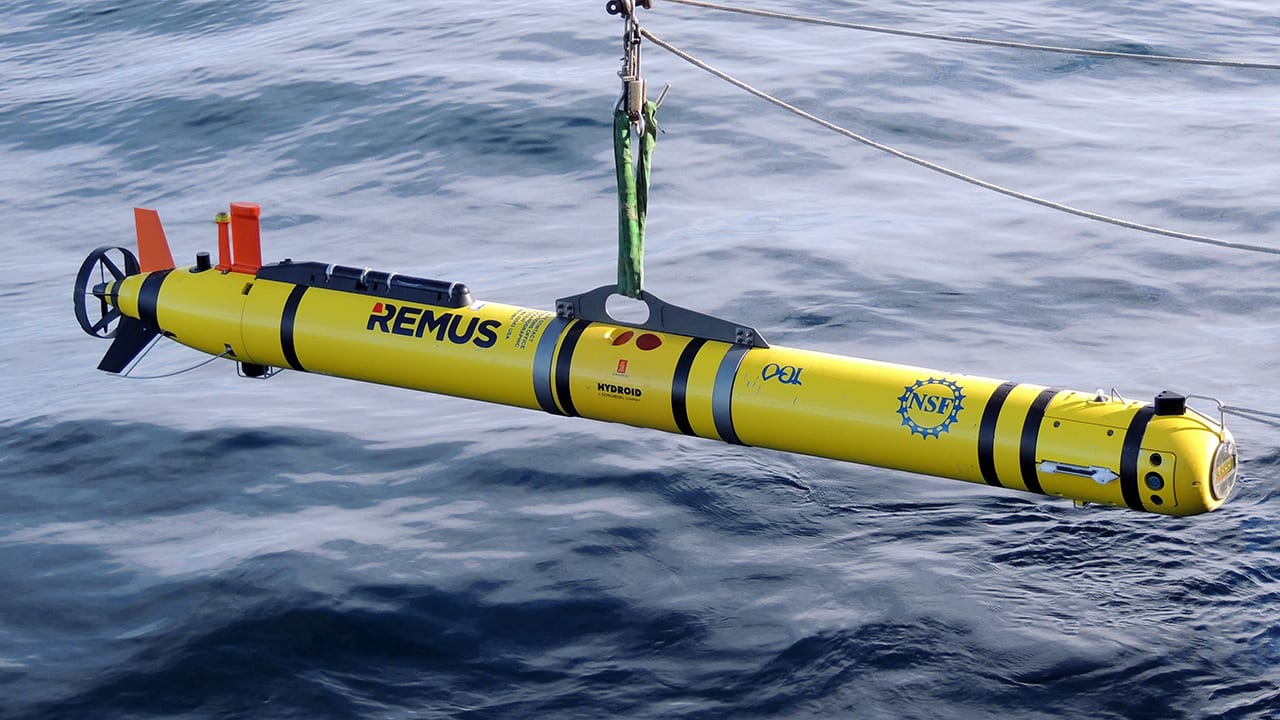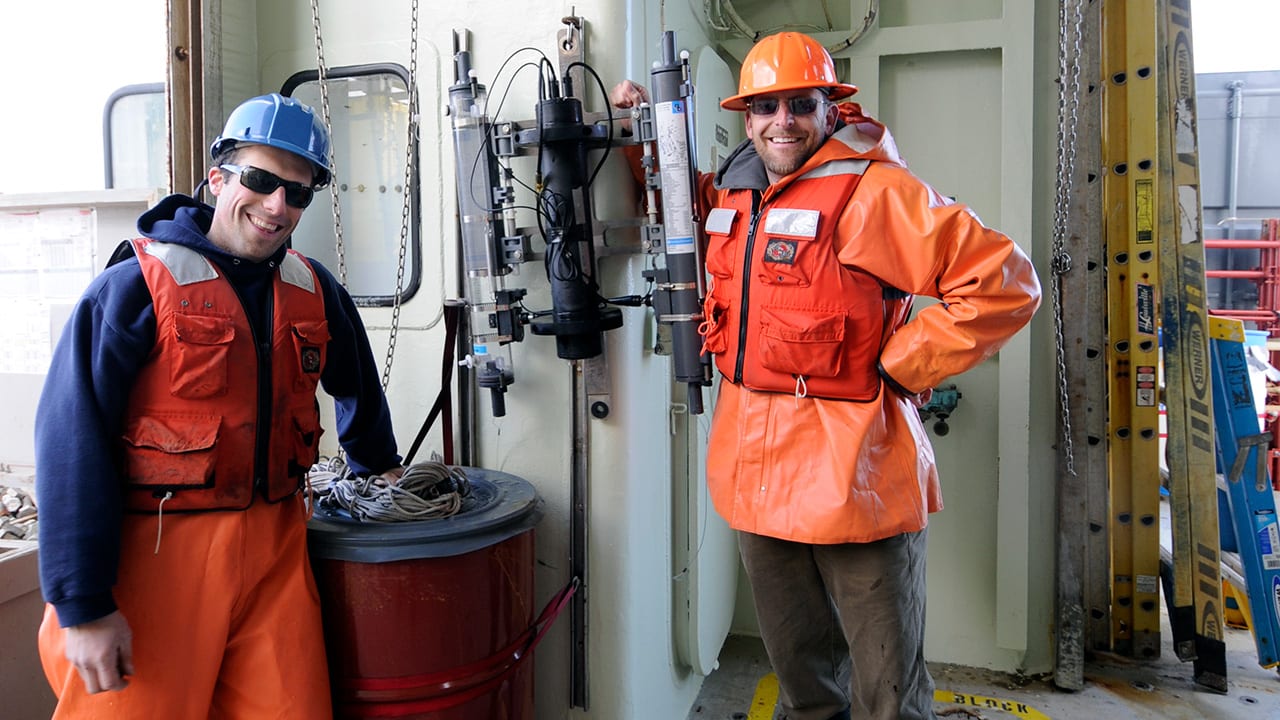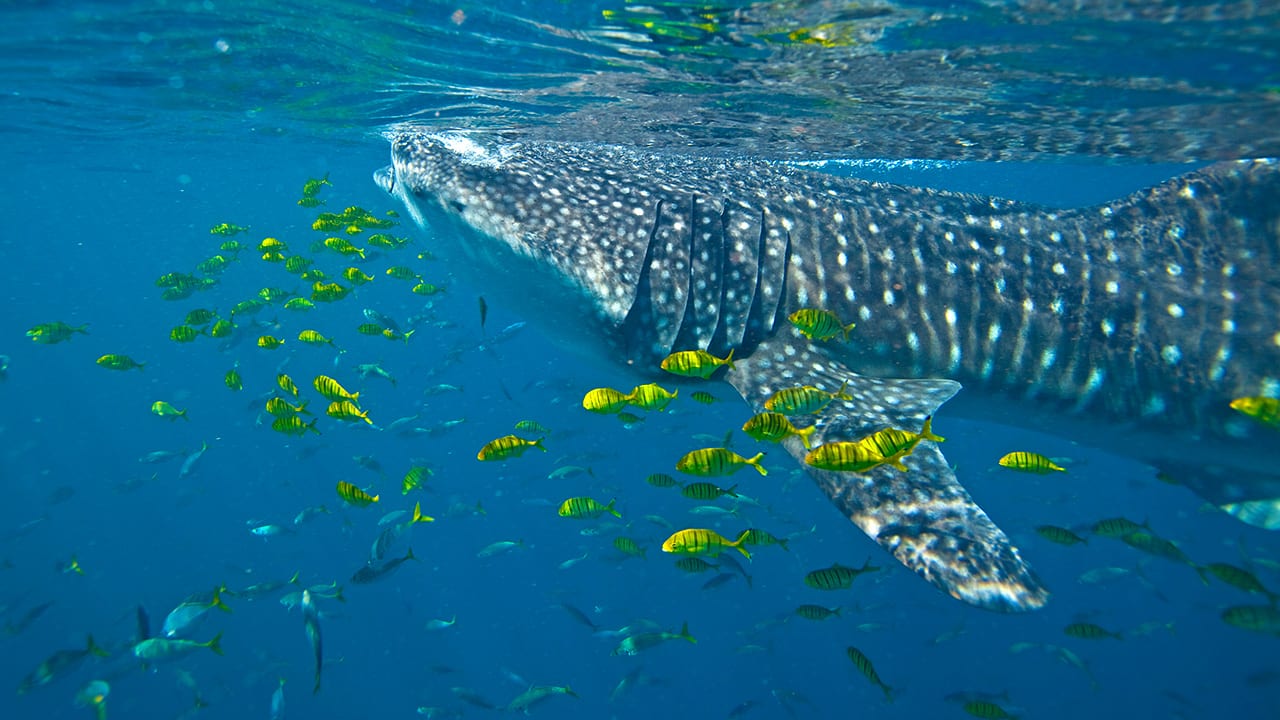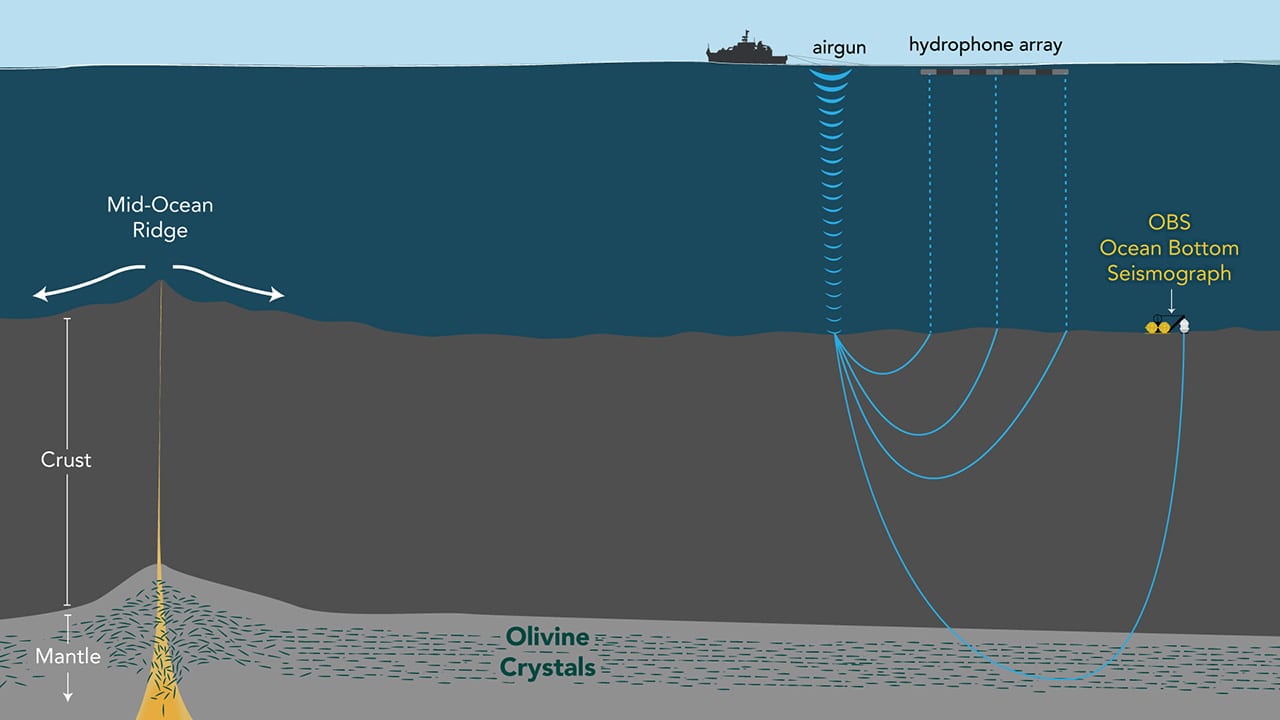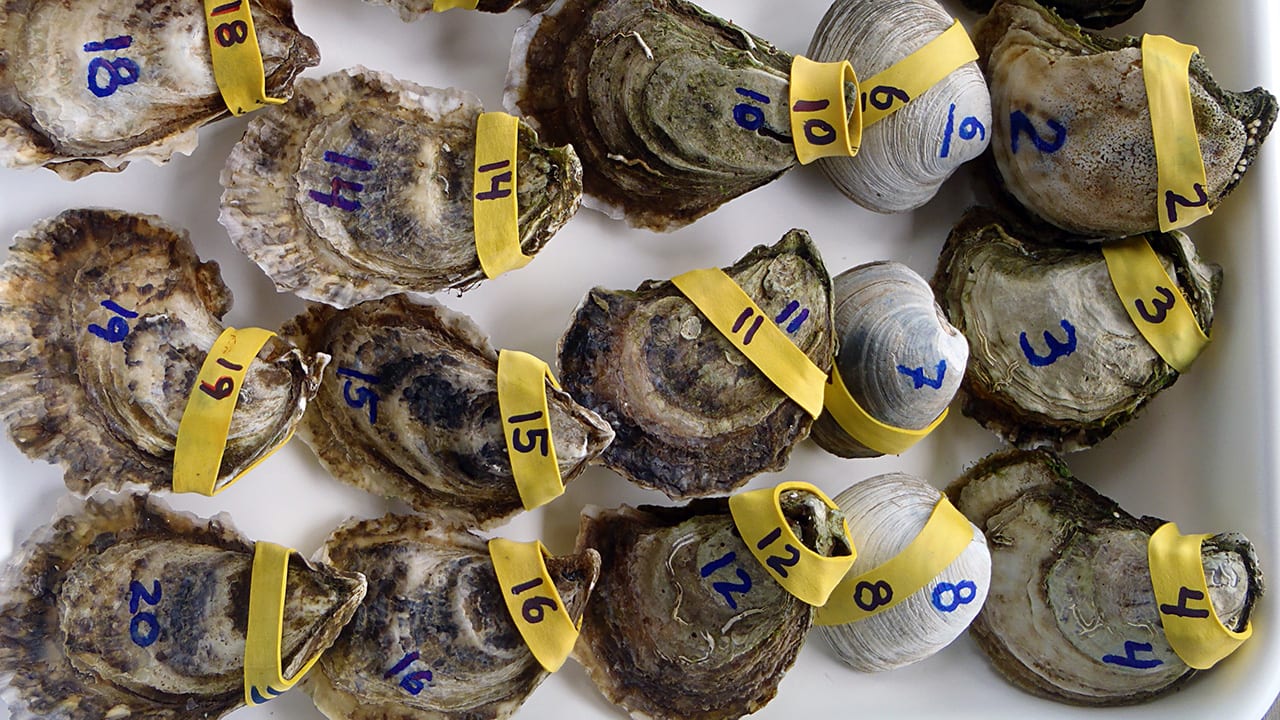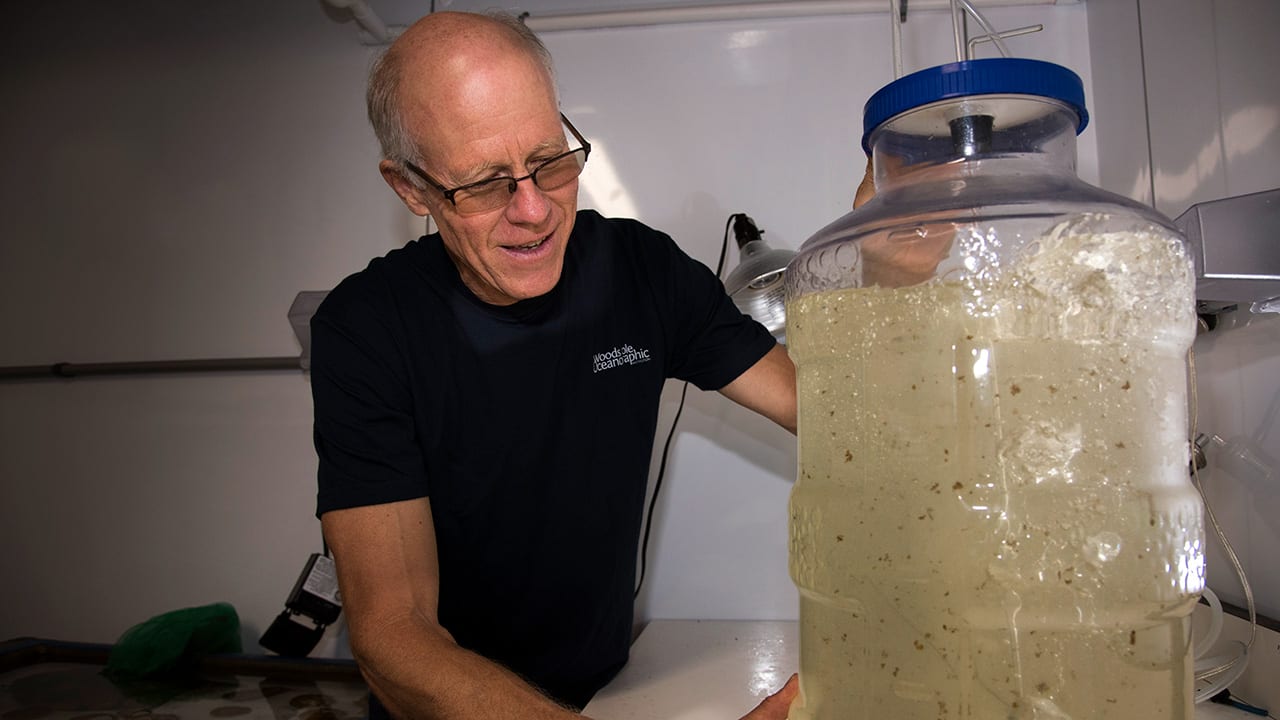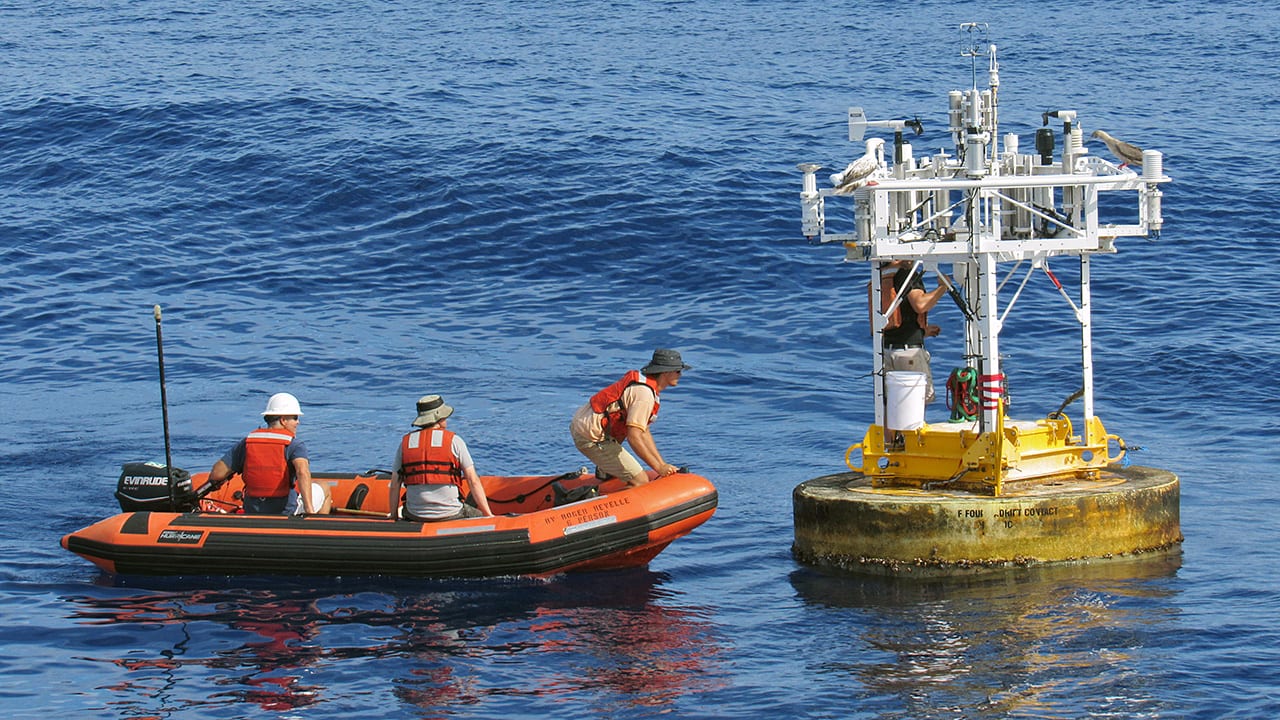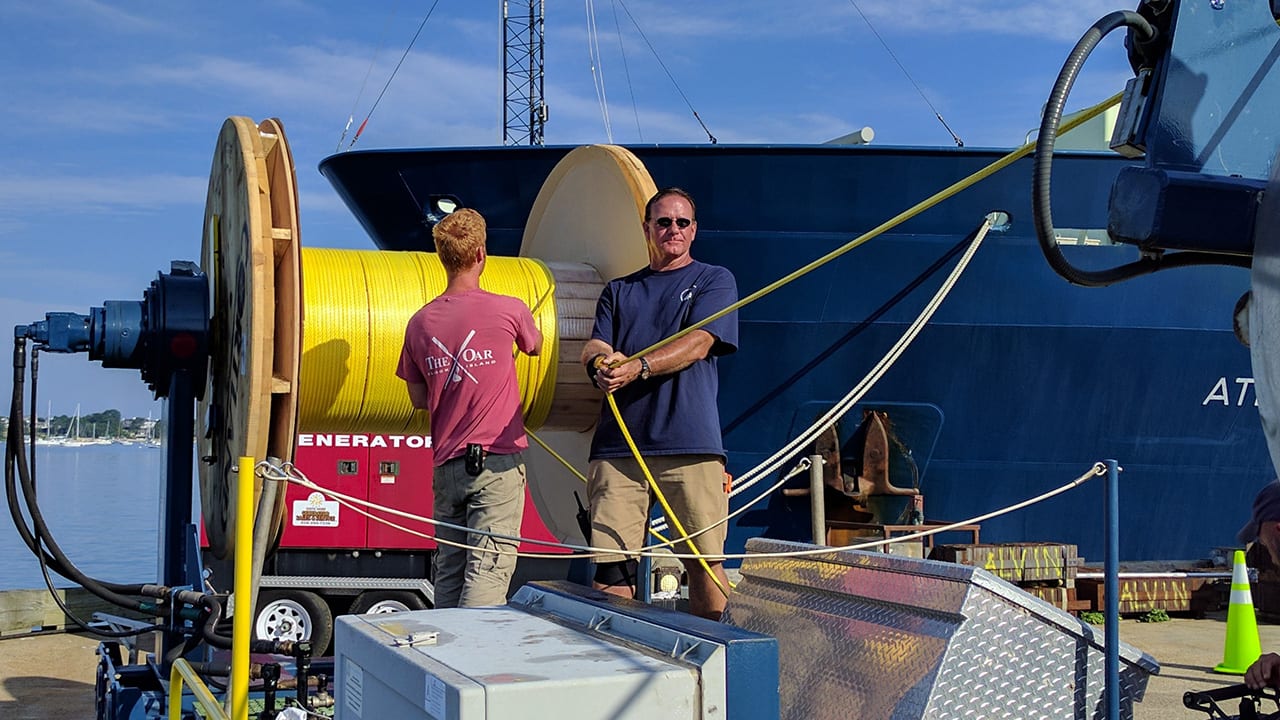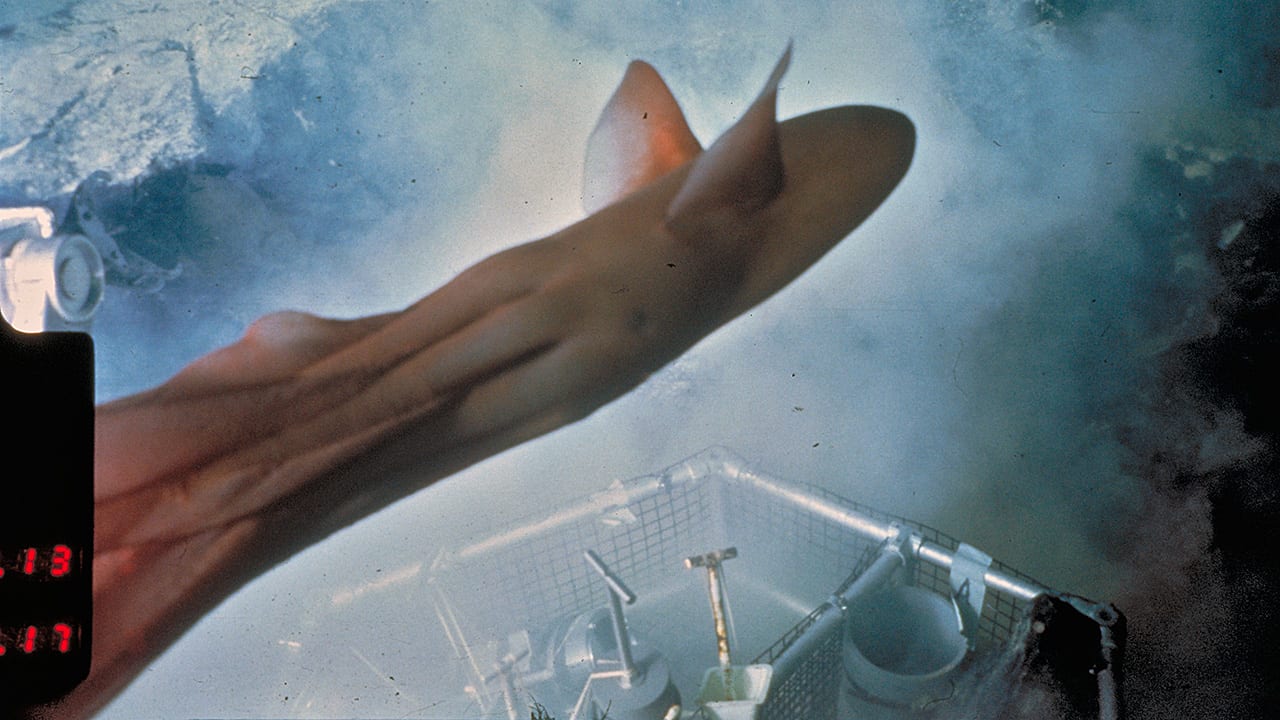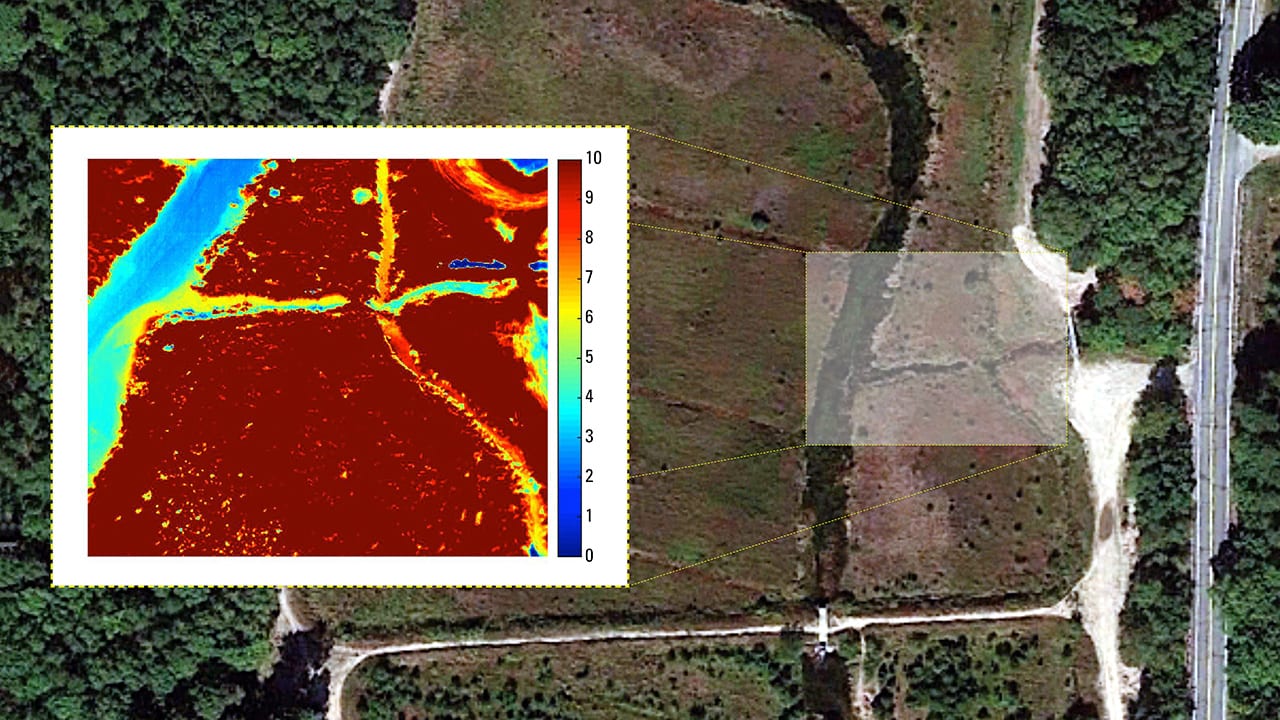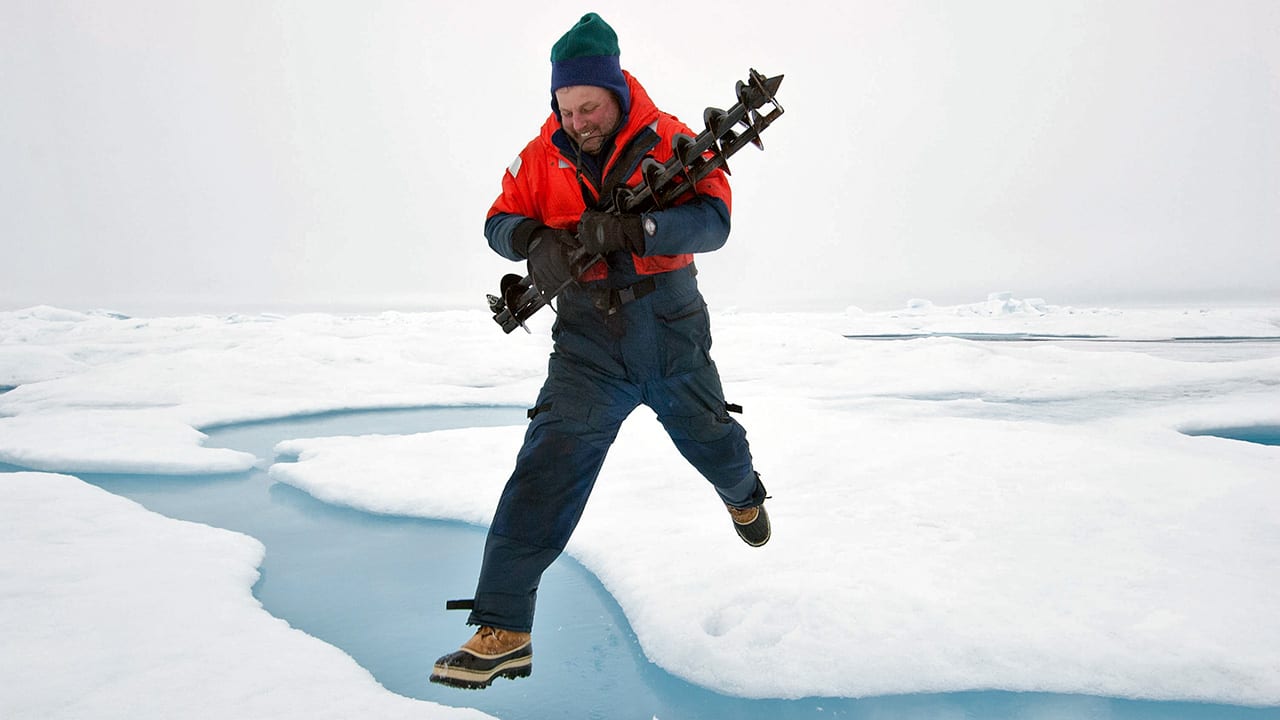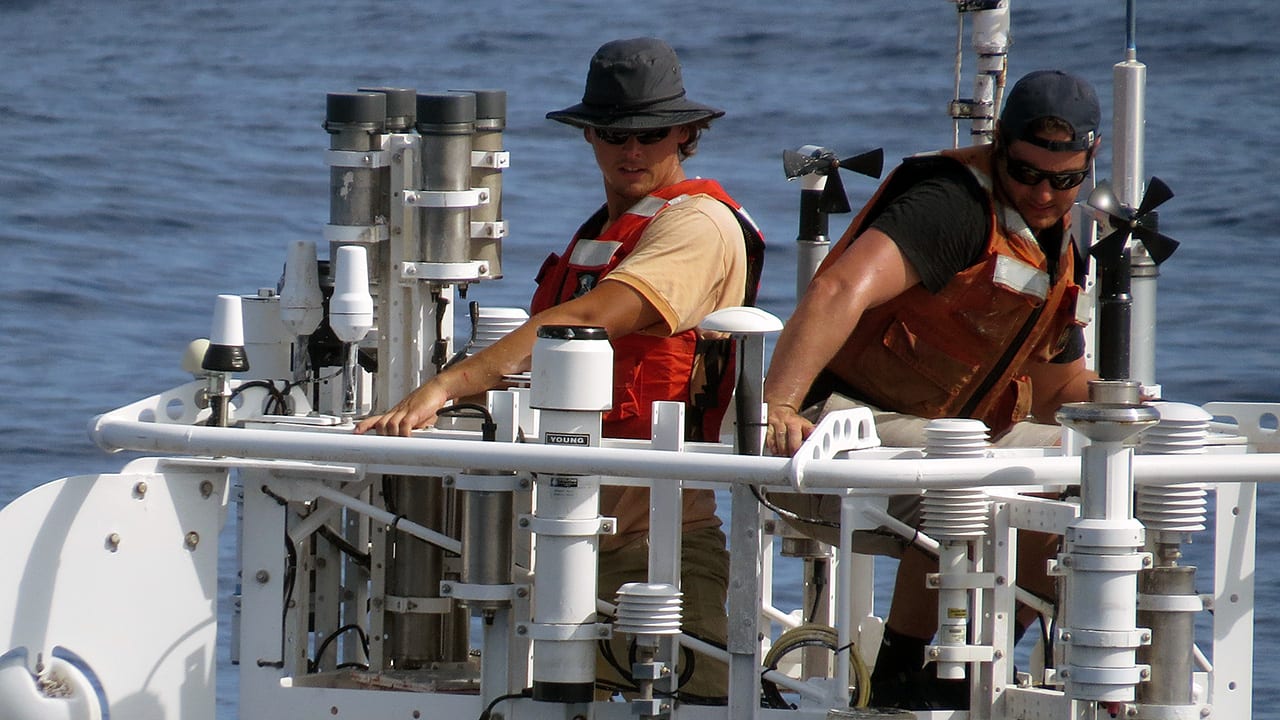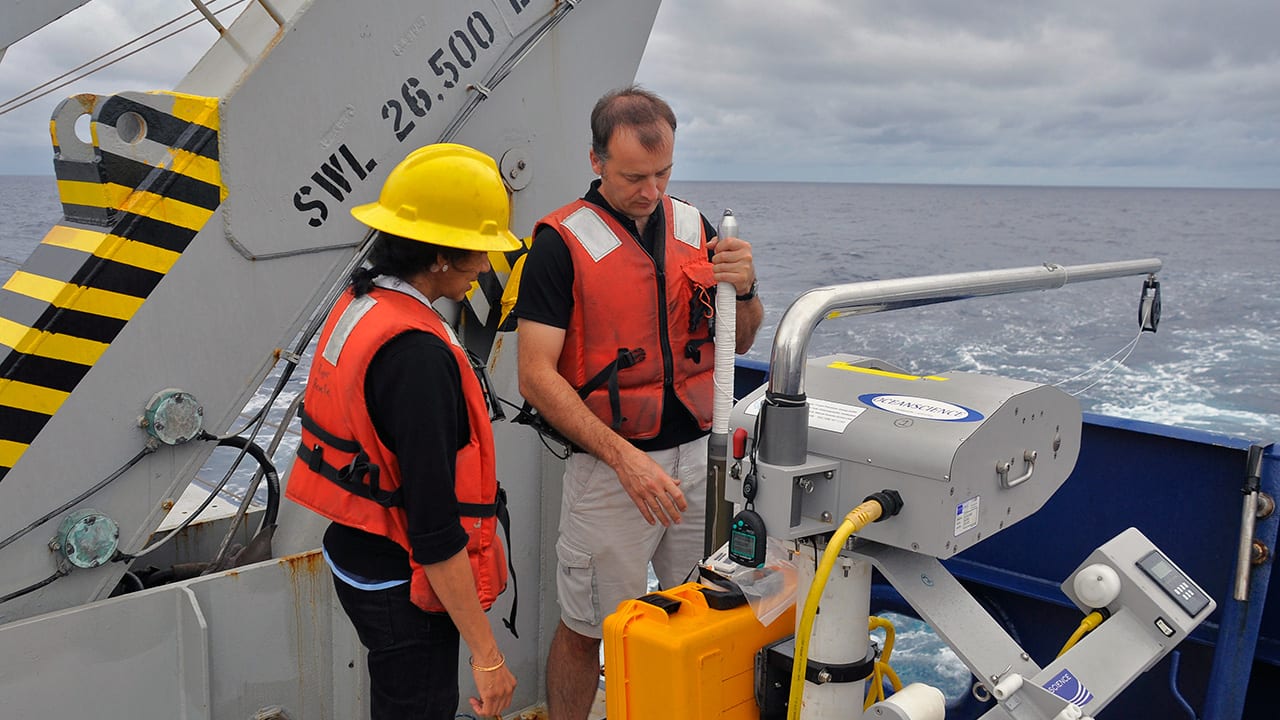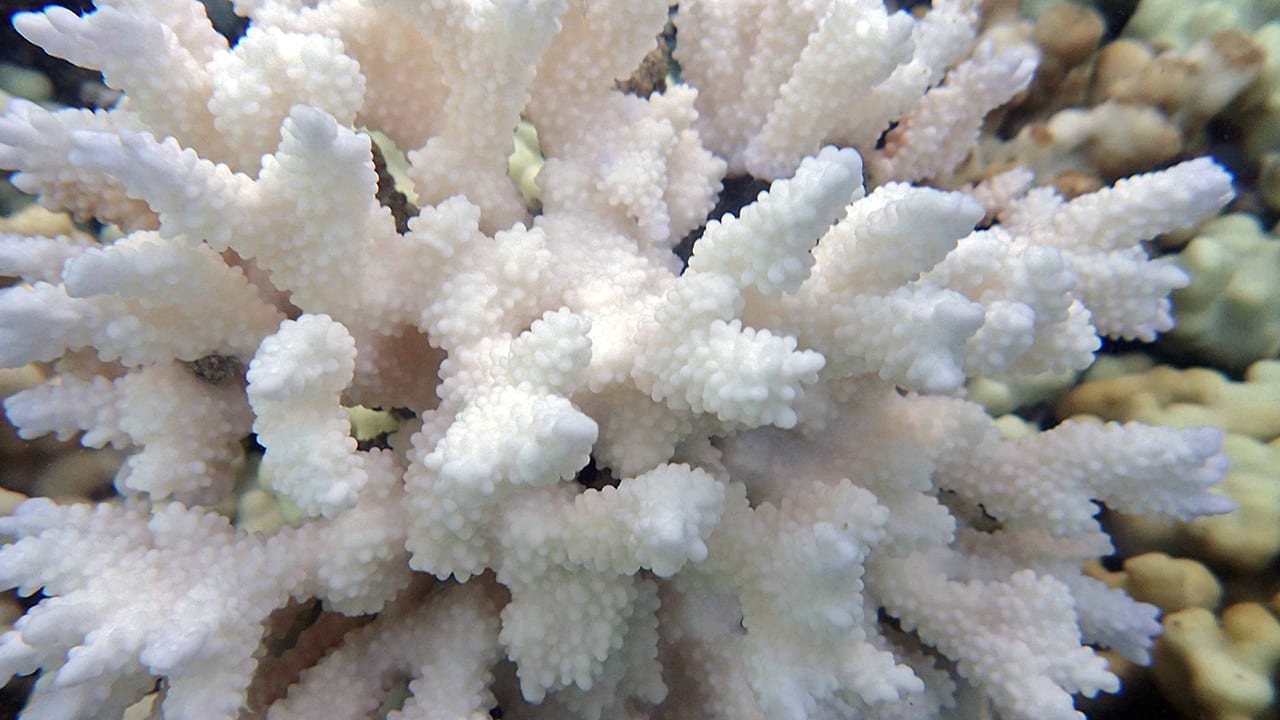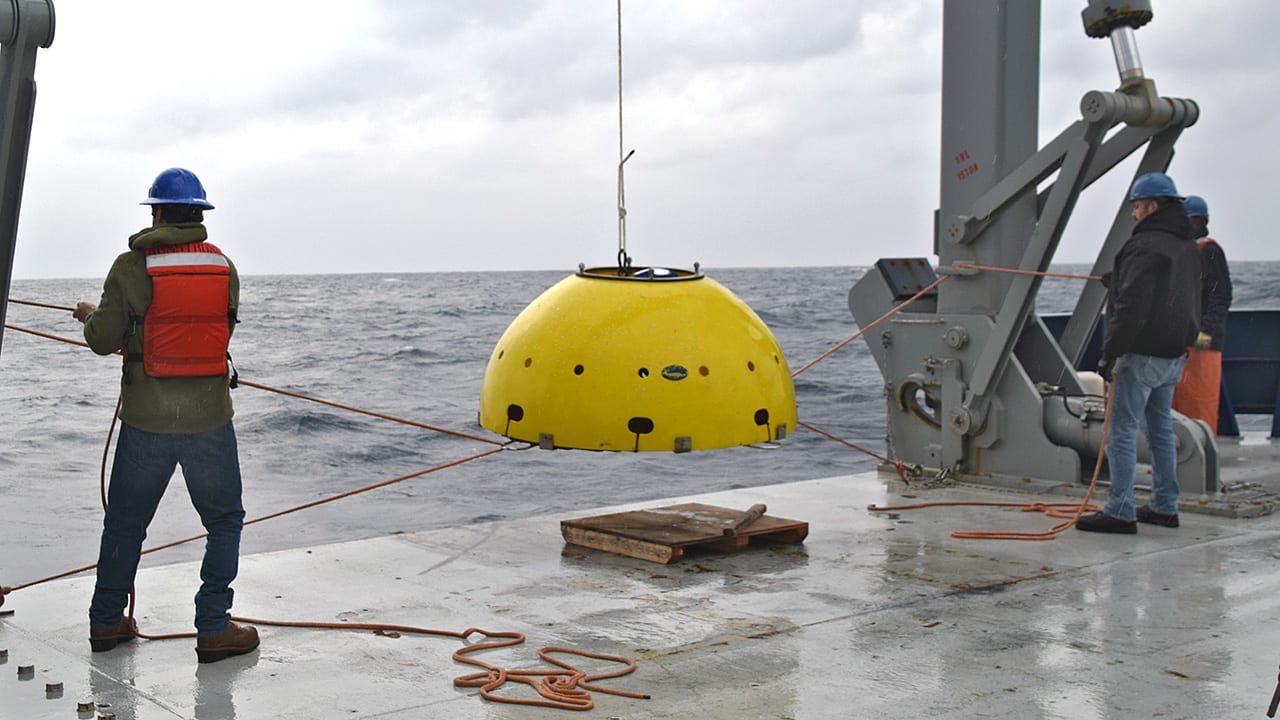Multimedia
At the Rainbow’s End
No pot of gold, but a large colony of king penguins can be found at the end of this rainbow. Breeding pairs and individuals form very large and dense colonies…
Read MoreIlluminating Research
A research team works by headlamps to extract sediments from tubes used to core the bottom of Yellowstone Lake. WHOI scientist Rob Sohn, who has explored hydrothermal vents on the…
Read MoreRemote Exploration
WHOI senior engineer Matt Heintz speaks with WHOI Trustees and Corporation members about major upgrades to the remotely operated deep-sea vehicle Jason. The $2.4 million upgrades were funded by the National…
Read MoreSlow and Steady
Pete Liarikos, bosun on the research vessel Neil Armstrong, signals to another crew member operating the ship’s crane to raise the crane’s load. Slowly. On the line are a pair…
Read MoreWhat are you doing here?
A curious Adélie penguin checks out a modified commercial quadcopter drone that researchers used along with estimations from ground counts to complete the first census of the species in the…
Read MoreScience in Rough Seas
Conditions can get a little rough off the coast of North Carolina in January, but that didn’t stop WHOI physical oceanographer Glen Gawarkiewicz and his team. Using an instrument called a…
Read MoreTaking the Stage
Biologist Heidi Sosik briefed WHOI volunteers last spring on the new NSF-funded Long-term Ecological Research site that she helped establish off the Northeast U.S. coast. Tonight, Sosik will present at…
Read MoreBad to the Bone
Look closely at this rib from a sperm whale found dead on a Nantucket Beach in 2002, and you can see a lesion—pits on the joint surface and a large…
Read MoreTagging Ocean Giants
WHOI researcher and engineer Alex Bocconcelli searched for endangered blue whales in southern Chile’s Corcovado Bay this past winter. To track whales’ diving behavior, his team attached temporary suction-cup tags equipped…
Read MoreFast “Flyer”
The NSF-funded Ocean Observatories Initiative Pioneer Array includes two types of observing systems: fixed moorings and mobile vehicles, such as this REMUS 600. With its powerful built-in propulsion system, a…
Read MoreA Mythic Ocean Instrument
WHOI scientist Benjamin Van Mooy (right) and MIT-WHOI Joint Program graduate student Jamie Collins flank the proof-of-concept version of an instrument called PHORCYS. Van Mooy co-developed the device to make…
Read MorePlaying Tag with Sharks
Whale sharks and other large fish such as rays, tuna, and swordfish roam our oceans, but we know remarkably little about them. That impedes our ability to understand their roles…
Read MoreProbing the Seafloor with Sound
To probe the seafloor, scientists send sound waves down through the ocean and seafloor and record reflected echoes with ocean bottom seismographs and hydrophones trailing behind a ship. The time…
Read MorePollution Fighters?
Researchers from WHOI Sea Grant and the Cape Cod Cooperative Extension analyzed wild and farmed oysters and quahogs to see how much nitrogen the shellfish can store in their shells…
Read MoreLittle Gems
WHOI biologist Scott Lindell examines a container of gametophytes, germinal kelp plants, being prepared for use in a combined aquaculture experiment he is conducting. In six months, the millimeter-long young…
Read MorePreparing for Recovery
Raymond Graham (right, in lifeboat) gets into position to join Ben Pietro (far right) on the surface buoy of a scientific mooring to prepare it for recovery after its 14-month…
Read MoreGetting in Line
WHOI engineer Christopher Griner (facing camera) and Chris Mannka, a crewmember of the research vessel Neil Armstrong, wound more than 12 kilometers (over 7 miles) of high-strength synthetic rope prior…
Read MoreEight Arms, No Ears
It’s a bird, it’s a plane … no, it’s a cirrate octopus that was spotted swimming past the viewport of the human-occupied deep-sea submersible Alvin in 1976. Cirrate octopuses have…
Read MoreHot Spots on the River
WHOI scientists used a drone equipped with a thermal imaging sensor to create this image (inset) of a section of the Coonamessett River watershed in Falmouth, Mass. The thermal image…
Read MoreFloe Jumping
John Kemp, operations leader of the WHOI Mooring Operations and Engineering Group, leaps over melt pond in the Arctic carrying equipment to drill a hole into an ice floe to…
Read MoreSecuring the Tower
Raymond Graham and Ben Pietro of WHOI’s Upper Ocean Processes Group work to secure instruments atop a mooring buoy in the eastern equatorial Pacific Ocean. The mooring is one of…
Read MoreA Fresh Perspective
WHOI researcher Sebastien Bigorre talks with WHOI physical oceanographer Amala Mahadevan about measurements from an underway-CTD, an instrument that measures conductivity (salinity), temperature, and depth while a ship is in…
Read MoreCoral Bleaching
This coral’s stark white color indicates that it is stressed. Corals host symbiotic algae that produce food for corals and also give corals their vibrant color. When ocean waters warm,…
Read MorePEACH-y Project
Gabriel Matthias (left) from the Skidaway Institute of Oceanography and WHOI senior engineering assistant Brian Hogue guide part of a mooring into the water from the research vessel Neil Armstrong…
Read More
